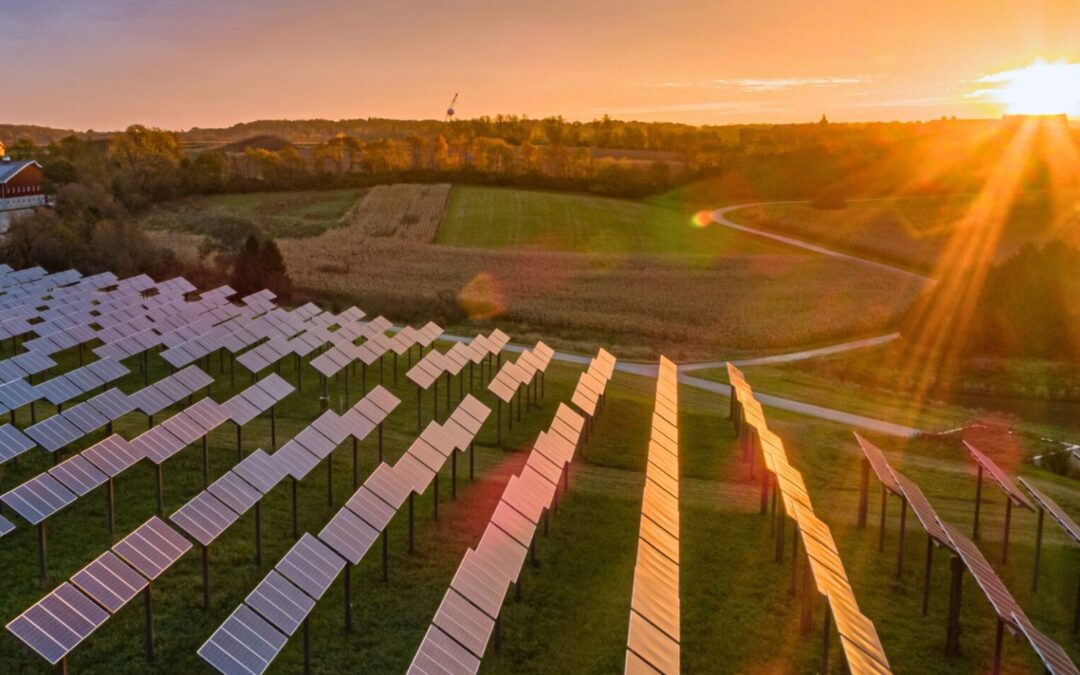As we work to decarbonize Wisconsin’s economy, the need for large-scale solar (LSS) development continues to grow. But solar panels alone won’t build our clean energy future. How developers and advocates plan, engage, and invest in communities can determine whether a project is a symbol of prosperity or a source of resistance. The process makes all the difference.
Several Wisconsin organizations are working directly with communities to shape how clean energy projects are planned and built. RENEW Wisconsin and Clean Wisconsin support large-scale solar developments by highlighting the benefits they bring to local economies and landowners. Wisconsin Land and Water supports county conservation staff and local officials by providing guidance on land use and policy considerations related to energy siting. UW-Madison Extension educates and engages communities through RESET (Renewable Energy Siting & Engagement for Tomorrow), a program that helps communities prepare and plan for large-scale renewables.
A 2023 research article titled “Good fences make good neighbors: Stakeholder perspectives on the local benefits and burdens of large-scale solar energy development in the United States,” explores how LSS solar projects are perceived and how to align solar development with local values. Through interviews with residents, developers, and public officials, the researchers found that community pushback is often less about solar and more about how projects are introduced and implemented.
I encourage you to read the full report. In the meantime, here are my four key takeaways from the study that offer guidance for better solar development:
- Start with Meaningful Engagement
Public meetings and legal notices aren’t enough. Communities want a seat at the table from day one. Study participants emphasized the need for early, consistent, in-person engagement throughout a project’s timeline, from planning to decommissioning.
Some of the best ideas include hosting solar bus tours, creating local advisory groups, holding job-training workshops, and sharing visuals of project designs. These efforts help demystify the process and show local residents that their input matters.
- Empower Local Liaisons
People trust people they know. Using local third-party intermediaries like community champions, nonprofits, or university partners can have a big impact on the success of a project. These liaisons can be the bridge between developers and residents, communicating in ways that resonate locally and holding all parties accountable.
Developers may know solar, but local partners know their communities. The best projects use these strengths to build trust and reduce tensions.
- Be Honest About Tradeoffs
No project is perfect, and developers must communicate tradeoffs transparently, whether it’s changes to the visual landscape, land-use concerns, or vegetation preferences. Residents should be invited to learn from neighboring communities to discuss the long-term impacts of land use. Developers and advocates should also be forthcoming about other aspects of the project, including the visibility of substations and transmission lines, as well as any local resources that may be impacted during construction.
Transparency and clarity can go a long way in building trust, dispelling rumors and misinformation, and improving overall community sentiment about a solar project.
- Demonstrate and Deliver Real Community Benefits
Residents want to see that these solar projects will improve their quality of life. Developers and advocates should highlight local benefits, including access to good-paying jobs, fair land lease payments, or energy savings for nearby households.
The study found that some developers overlook the input of project neighbors. In addition, the profits from land leases sometimes go to absentee owners or corporations. Officials and communities are calling for stronger community benefits agreements that ensure the value of clean energy stays local and lasts long after the developers have left town.
We Can Develop Solar That Works for Everyone
This study is a reminder that solar success isn’t just about megawatts. It’s about relationships and transparency. In many ways, the responsibility of this community engagement work begins with developers. Fortunately, RENEW has several developer members who lead by example, showing how authentic community engagement can lead to better outcomes. Wisconsin’s most successful LSS projects demonstrate that if we want clean energy to power a better future, we need to build projects with communities, not just in them.
Let’s continue to engage in policies and practices that make solar smarter, more inclusive, and grounded in local Wisconsin values.

